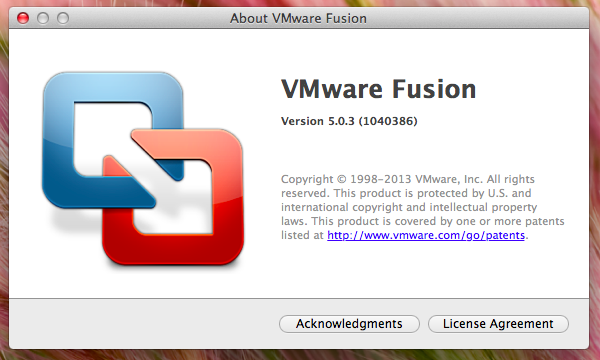
And, one step further, the things it really only needs are: vmwarevm file is little more than a wrapper around the various bits that a VM needs to run. I looked at ovftool - and after passing out trying to read the million switches and options and complex terminology - not to mention some pretty scathing thoughts on it in the VMWare forums, I fortunately stumbled over a way of doing it. I initially looked at the Converter tool - but remembering the pain from last time - wanted to find a new way. We’ve become so accustomed to “draggy-droppy it just sorta works” recently that I hoped it would be the same here. I might do a post on the setup itself at some point.īut to the issue - well, it was exactly as it was back then - I wanted to transfer some pre-built VMWare Fusion virtual machines to it.
Vmware fusion mac ssh nat free#
Still free but nowadays more awesome - there is no longer a fat client - it’s all web client, which makes managing it from OSX a lot easier. This is hooked up to a ReadyNAS with 16tb storage and running VMWare ESXi 6.7. 8-core processor, 128gb RAM, 600gb SDD, 10gb NICs - the works. If the 2012 machine was a beast… this thing is a behemoth. So a few weeks ago, rather than trying to build an ESXi host, I cut to the chase and splashed out on a SuperMicro SuperServer. (Although in fairness, I’m not sure anyone really ever *wants* to do that.) I digress. We use Azure a lot nowadays, but there are still some scenarios where we’d like some on-premise kit such as developing against Sharepoint. That particular ESXi server didn’t last particularly long - no technical issues, it just didn’t turn out to be the thing I wanted.įast forward 6 years, and I found myself in a new situation where having an ESXi host would be useful. In fact, I faced then, moreorless the same problem I was facing a few days ago. I am now able to ssh to the VM from the MacOs host (progress!), however the connectivity from the Debian VM to the internet still does not work. I followed the steps and created adapter as per the screenshot attached.
Vmware fusion mac ssh nat how to#
Could you please advise on ways how to achieve that. That is to be able to connect to the guest from the host and also to connect from the guest to the outside internet (as I am able to do when on the home network). I would really like to be able to keep the VM on the fixed 192.168.1.XXX address even outside of my home network.

In this situation my Host OS (Mac) obviously gets a different ip address and the VM (Debian) becomes inaccessible from the host mac os.


The problem is when I leave home and connect to internet via 4G or some public wifi etc. It all works very well in my local network under 192.168.1.XXX ip range. The VM has fixed IP address (required) and the networking is bridged. I am running a VM (Debian) on MacOs using VMware Fusion.


 0 kommentar(er)
0 kommentar(er)
